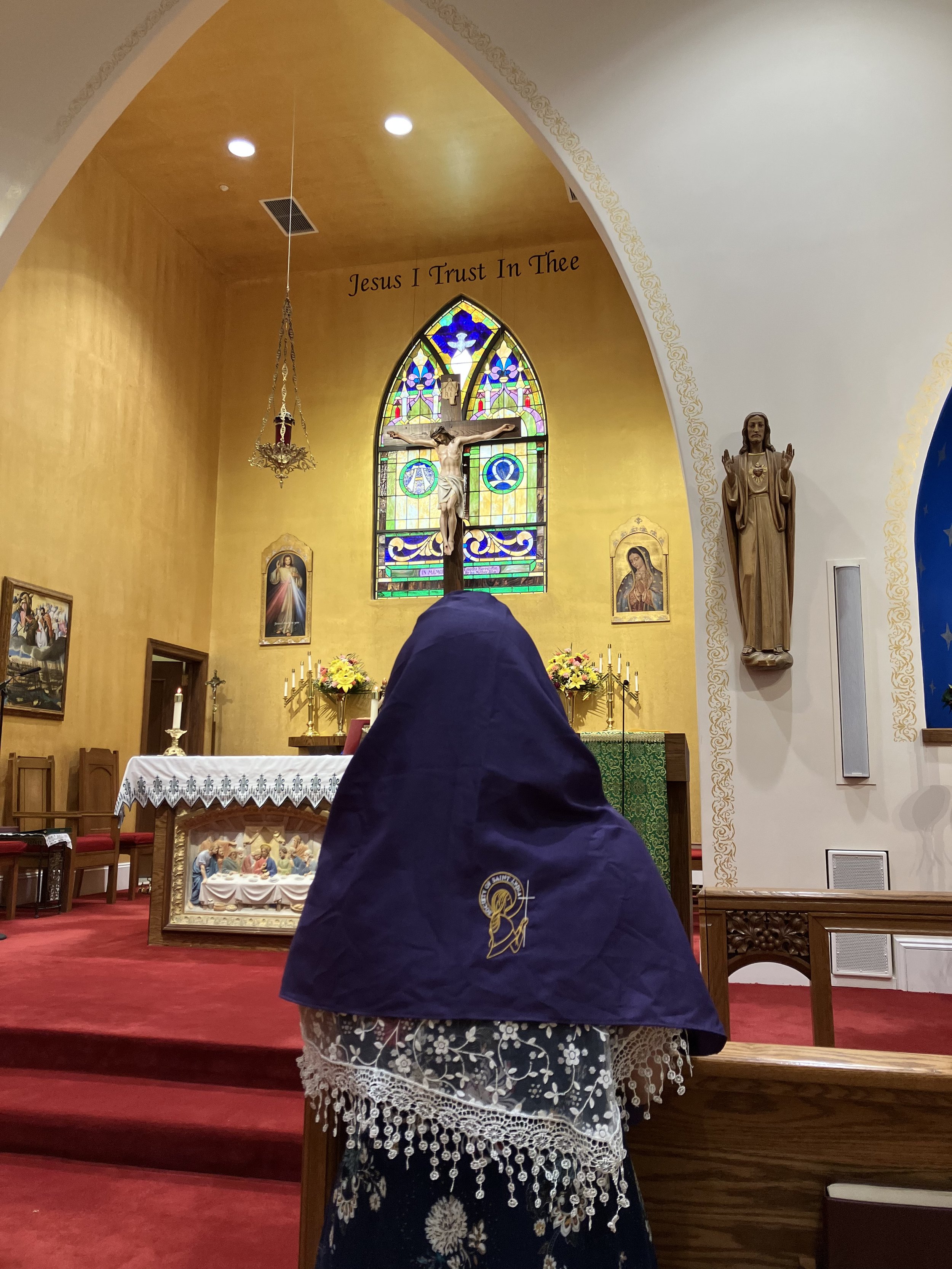Purple Cloth

The color purple had great significance during the lifetime of St. Lydia. Purple cloth was rare and difficult to make. For this reason, it was typically worn by the wealthy and particularly by royalty. However, it acquired even greater significance during the Passion of Our Lord, as he was clothed in purple and crowned with thorns in mockery (Mk. 15:17). Therefore, members of this consorority wear the color purple for two reasons: first, as an expression of their baptismal dignity as daughters of the King of Kings, and secondly, as a reminder of their call to be united in heart and mind to Christ Crucified.
-

Prayer Shawl
The practice of women wearing a veil or prayer shawl dates back before the time of Christ, to Judaism. Women would cover their heads as a sign of modesty, such that, married women would "reserve" their full beauty of a head unveiled only for their husbands. St. Paul refers to the practice of women keeping their heads covered during times of prayer (1Cor. 11:2-16). This practice was an outward sign of a women's desire for humility and her obediential submission to God and her spouse. In addition, there is the tradition of St. Veronica, who used her veil to cleanse the face of Christ during his Passion. The 1917 Code of Cannon Law reflected the practice of wearing a veil stating, "women, however, should be with head covered and modestly dressed, particularly when they approach the Lord's table" (Canon 1262.2). In the earlier Rite of the Mass (the current Extraordinary Form), women were required to wear a head covering. While it is no longer required by Church Law, it is a devout practice, particularly as an imitation of the Blessed Virgin Mary and a sign of modesty and humility.
-

Structure
Each new member will be enrolled in a group. Each group is comprised of no more than seven members. Each group will be part of a cluster. Each cluster is comprised of no more than seven groups. Each cluster will be part of a region. Each region will be comprised of no more than seven clusters.
Each group will meet (either in person or electronically/telephonically) at least one time each month. Each member will pray for the other members of her group by name each day. The Chaplain will appoint a Coordinator for each group.
Each cluster will meet in person at least twice a year. The Chaplain will appoint a Coordinator for each cluster.
Each region will meet in person at least one time a year. The Chaplain will appoint a Coordinator for each region.